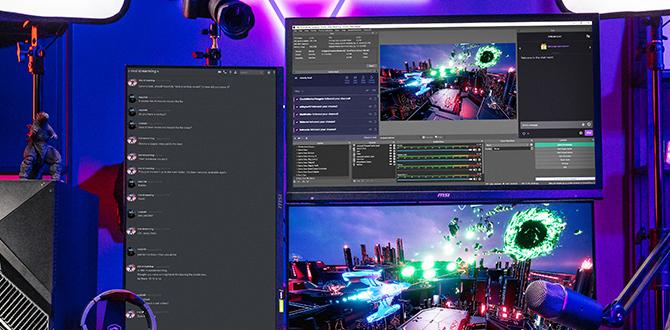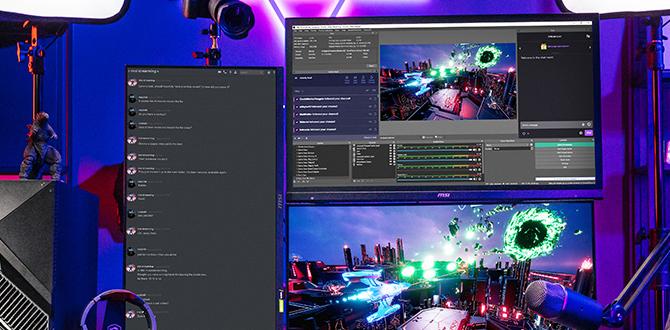3/16″ and 8mm carbide end mills are excellent for fiberglass, offering precision and efficiency. With proper techniques, they cut clean, smooth finishes, minimizing dust and heat. Learn the best practices for successful fiberglass machining using these versatile tools.
Cutting fiberglass can be tricky. It’s tough stuff, and using the wrong tool can lead to messy edges, overheating, and tools that dull quickly. Many beginners struggle to get a clean cut, ending up with frustrating fraying or chipping. But there’s a reliable solution that many experienced makers swear by: using the right carbide end mill. If you’ve got a 3/16 inch or an 8mm shank carbide end mill itching to get to work, this guide is for you. We’ll walk through exactly how to achieve amazing results with fiberglass, turning a potentially difficult job into a smooth operation.
Why Carbide End Mills Are Your Fiberglass Best Friend
Carbide end mills are made from tungsten carbide, a super-hard material. This hardness is key when cutting abrasive materials like fiberglass. Unlike more common high-speed steel (HSS) tools, carbide can handle the heat and the grit without wearing down as fast. This means:
- Longer Tool Life: They stay sharp for many more cuts.
- Cleaner Cuts: The hardness allows for precise chip formation, reducing fraying.
- Higher Cutting Speeds: You can often cut faster without damaging the tool or the material.
- Less Heat Buildup: While some heat is generated, carbide generally dissipates it better for this application, reducing the risk of melting the resin in the fiberglass.
For fiberglass, specialized flute geometries are also a big help. Tools designed for composites often have fewer flutes (like 2 or 3) and specific edge geometries that help evacuate material efficiently and prevent clogging. This is where our focus on the 3/16 inch and 8mm shank sizes comes in handy, as they are common and versatile.
Picking the Right Carbide End Mill for Fiberglass
Not all carbide end mills are created equal, especially when it comes to fiberglass. Here’s what to look for:
Key Features to Consider:
- Material: Solid carbide is a must.
- Number of Flutes: For fiberglass and composites, tools with 2 or 3 flutes are often preferred. This allows for better chip evacuation, which is crucial for preventing heat buildup and clogging. More flutes can sometimes lead to more heat and finer dust.
- Coating: While not always essential for fiberglass, coatings like TiN (Titanium Nitride) or ZrN (Zirconium Nitride) can add extra hardness and reduce friction, further improving tool life and cut quality.
- Geometry: Look for end mills designed for plastics or composites. These often have sharper cutting edges and specific helix angles to shear the material cleanly.
- Shank Size: We’re focusing on 3/16 inch (approximately 4.76mm) and 8mm. Both are common and suitable. The 8mm shank is generally sturdier and can handle more aggressive cuts than the 3/16 inch.
- Length: A “standard” length is usually fine for most common fiberglass work. If you need to reach deeply into a cavity, you might need a “long reach” end mill.
For a beginner tackling fiberglass, a simple, uncoated solid carbide end mill with 2 or 3 flutes in the 3/16 inch or 8mm size will likely give you great results without overcomplicating things.
Setting Up Your Machine for Fiberglass Machining
Before you even think about cutting, proper machine setup is vital for safety and success. This applies whether you’re using a CNC mill, a Bridgeport-style mill, or even a router with a suitable collet.
Essential Setup Steps:
- Secure Workholding: This is paramount. Fiberglass can be light and prone to vibration. Use clamps, a vise, or specialized fixturing to ensure your fiberglass part doesn’t move during machining. A loose part is dangerous and will result in a poor cut. Double-check that your clamps will not interfere with the end mill’s path.
- Proper Tool Installation: Insert the end mill into the collet or tool holder. Ensure it’s seated securely and that the shank is gripped firmly. Overhang should be minimized to maintain rigidity and reduce vibration.
- Coolant or Lubrication (Optional but Recommended): While not always used with fiberglass, a light mist of coolant or even a blast of compressed air can help manage heat and clear chips. For beginners, compressed air is often easiest and most effective. Avoid flood coolant unless you have a system designed for it and for composite materials, as it can make a mess.
- Dust Collection: Fiberglass dust is hazardous and messy. This is non-negotiable. Ensure you have a robust dust collection system connected to your machine. A good dust shoe on a router or a direct vacuum line on a mill is essential for health and a cleaner workspace. You can learn more about personal protective equipment (PPE) for machining from resources like OSHA, but dust collection is your first line of defense.
- Machine Stability: Make sure your machine is on a stable surface and calibrated. Vibrations can degrade cut quality.
Taking these steps ensures a safer working environment and lays the foundation for precise machining.
Recommended Machining Parameters for Fiberglass
This is where the magic happens! Getting the speeds and feeds right is critical for a clean cut and a long-lasting tool. These are starting points; always adjust based on your specific material and machine.
Important Note: Fiberglass resin types and glass fiber content can vary. These are general guidelines. Always test on a scrap piece if possible.
General Parameters for 3/16″ & 8mm Carbide End Mills in Fiberglass:
| Parameter | 3/16″ (Metric Approximation: 4.76mm) End Mill | 8mm End Mill | Notes |
|---|---|---|---|
| Spindle Speed (RPM) | 12,000 – 18,000 RPM | 10,000 – 15,000 RPM | Higher speeds are generally better for Fiberglass, but watch for melting. |
| Feed Rate (IPM) | 15 – 30 Inches Per Minute (IPM) | 20 – 40 Inches Per Minute (IPM) | Adjust based on chip thickness. Aim for fine chips. (Approx. 381 – 762 mm/min for 3/16″, 508 – 1016 mm/min for 8mm) |
| Depth of Cut (DOC) | 0.010″ – 0.030″ (0.25mm – 0.75mm) | 0.015″ – 0.040″ (0.4mm – 1.0mm) | Take shallow passes to avoid stressing the material and tool load. |
| Stepover (Width of Cut) | 25% – 50% of tool diameter | 25% – 50% of tool diameter | For profiling/contouring. For facing, higher stepover is okay. |
| Cooling/Lubrication | Compressed Air Blast | Compressed Air Blast | Helps clear chips and reduce heat. |
Let’s break down why these settings are important:
- Spindle Speed (RPM): This is how fast the tool spins. Higher RPM generally leads to a smoother finish. However, too high a speed can generate excessive heat, melting the resin in the fiberglass. You’re looking for a sound cut, not a “singing” or melting one.
- Feed Rate (IPM): This is how fast the tool moves through the material. When you increase RPM, you typically need to increase feed rate to maintain a proper chip load. This ensures you’re “shearing” the material rather than rubbing and rubbing, which generates heat and dulls the tool. You want small, consistent chips, not fine powder or gummy residue.
- Depth of Cut (DOC): This is how deep each pass takes. For fiberglass, it’s best practice to take shallow passes. Deep cuts can overstress the material, leading to delamination or chipping, and can also put too much load on the end mill, breaking it. Think of making many thin “shavings” rather than trying to cut through all at once.
- Stepover: This is how much the tool moves sideways on each pass when performing operations like pocketing or profiling. A lower stepover (e.g., 25%) will give a smoother surface finish but take longer. A higher stepover (e.g., 50%) is faster but might leave more stepping marks.
Tip: If you’re using a CNC, you might have access to software that can calculate these parameters. Online G-code generators or manufacturer’s websites can be a good starting point for suggested speeds and feeds for different materials and tools.
Step-by-Step: Machining Fiberglass with Your Carbide End Mill
Now that we’ve covered the preparation and parameters, let’s get cutting! This guide assumes you have your material secured and your CNC or manual mill set up.
Procedure:
- Material Preparation: If you’re starting with a sheet of fiberglass, make sure it’s properly supported. If it’s a molded part, ensure it’s securely held.
- Tool Engagement (XY Plane):
- CNC: Your program will handle this. It’s programmed to move the cutter in the X and Y directions according to your design.
- Manual Mill: You will guide the handwheels to move the cutter. Start by bringing the spinning end mill just above the surface of the fiberglass.
- Plunge Cut (Z Axis): Gently lower the end mill into the fiberglass to the desired depth of cut.
- CNC: This is programmed as a plunge move.
- Manual Mill: Carefully feed the Z-axis handwheel to lower the tool. You should hear and feel the tool entering the material. Listen to the sound; it should be a consistent “cutting” sound, not a harsh grinding or chattering.
- Cutting Pass: Move the end mill through the material in the X or Y direction (or both for complex paths) at your programmed/controlled feed rate.
- CNC: The machine follows your G-code path.
- Manual Mill: Use the handwheels to maintain a steady feed rate. On a manual mill, it’s common to use “climb milling” (where the cutter rotates in the same direction as the feed) for a smoother finish, but this requires a rigid machine and careful control. Conventional milling (where the cutter rotates against the feed direction) is often safer for beginners as it’s less likely to “run away” from you.
- Managing Chips and Heat:
- As you cut, the compressed air should be blasting over the cutting area to clear chips.
- If you’re working on a manual mill, you might need to pause periodically to clear chips manually with a brush (while the spindle is OFF and dust collection is running).
- Watch for any signs of melting or excessive dust. If you see this, your feed rate might be too slow, your RPM too high, or the depth of cut too aggressive. Back off and adjust.
- Retract and Repeat: Once a pass is complete, retract the end mill (move it up in the Z-axis) and move to the next cutting path or the next depth.
- CNC: This is handled by the program.
- Manual Mill: You will manually retract and reposition.
- Finishing Passes: For highly precise or aesthetic cuts, consider a “finishing pass.” This is a final, very shallow cut (e.g., 0.005″ or 0.1mm) made at a slightly slower feed rate to achieve a very smooth surface.
- Part Removal: Once all machining is complete, carefully remove any clamps or holding devices. Handle the fiberglass part with care, especially around edges.
Safety First: Always wear safety glasses, a dust mask (preferably a respirator rated for fine particulates like N95 or higher), and ear protection. Never reach near a spinning tool. Ensure your dust collection is operational before starting.
Common Issues and How to Solve Them
Even with the best setup, you might run into a few snags. Here’s how to troubleshoot:
Problem: Fraying or Delamination at Edges
- Cause: The end mill is rubbing, not cutting cleanly. Depth of cut might be too high, feed rate too slow, or the tool is dull.
- Solution:
- Reduce depth of cut.
- Increase feed rate slightly.
- Ensure your spindle speed isn’t too low.
- Check if the end mill is sharp. A slight burr on the edge can cause this.
- Try a climb milling strategy if using a manual machine.
Problem: Melting Resin
- Cause: Excessive heat is generated. This usually means the feed rate is too slow for the spindle speed, or the spindle speed is too high.
- Solution:
- Increase feed rate.
- Decrease spindle speed.
- Ensure you are using compressed air to clear chips and cool the cutting zone.
Problem: Excessive Dust or Clogging
- Cause: Inadequate chip evacuation. This can be due to too many flutes, too fine a feed rate, or poor dust collection.
- Solution:
- Ensure your dust collection is working at maximum efficiency.
- Try increasing the feed rate slightly to create larger chips.
- If possible, use an end mill with fewer flutes (2 or 3 flutes are great for this).
Problem: Chattering or Vibration
- Cause: Tool deflection, loose workholding, or machine rigidity issues. Sometimes also related to aggressive feed rates or depths of cut.
- Solution:
- Reduce depth of cut.
- Ensure your workholding is rock-solid.
- Use a shorter tool or minimize tool overhang.
- If on a manual mill, try to use a more controlled approach to feed rates.
Problem: End Mill Breaking
- Cause: Too aggressive a cut (depth or feed), impact on a hard spot in the material, or plunging too fast.
- Solution:
- Always plunge at a controlled, slow feed rate.
- Take shallower depths of cut.
- Ensure your feed rate is appropriate; don’t force the cut.
- Check for tool runout or vibration that might be causing uneven cutting.
Remember, patience and observation are your best tools. Listen to the sound of the cut and look at the chips being produced. They will tell you if your settings are right.
Why the 3/16″ vs. 8mm Shank Matters for Fiberglass
Both the 3/16 inch (approx. 4.76mm) and 8mm carbide end mills are excellent choices, but the shank size can influence performance:
3/16″ Shank End Mills:
- Pros:
- Often less expensive.
- Can fit into smaller collets on some machines.
- Good for detail work and smaller projects.
- Require less engagement depth for shallow cuts.
- Cons:
- Less rigid than an 8mm shank.
- More prone to deflection under heavy loads, potentially leading to poorer finish or tool breakage if pushed too hard.
- Not ideal for aggressive material removal.
8mm Shank End Mills:
- Pros:
- Significantly more rigid, leading to better tool life and a cleaner finish, especially at higher feed rates.
- Can handle more aggressive cutting parameters without deflecting as much.
- Less likely to chatter under load.
- A more robust choice for general fiberglass machining.






